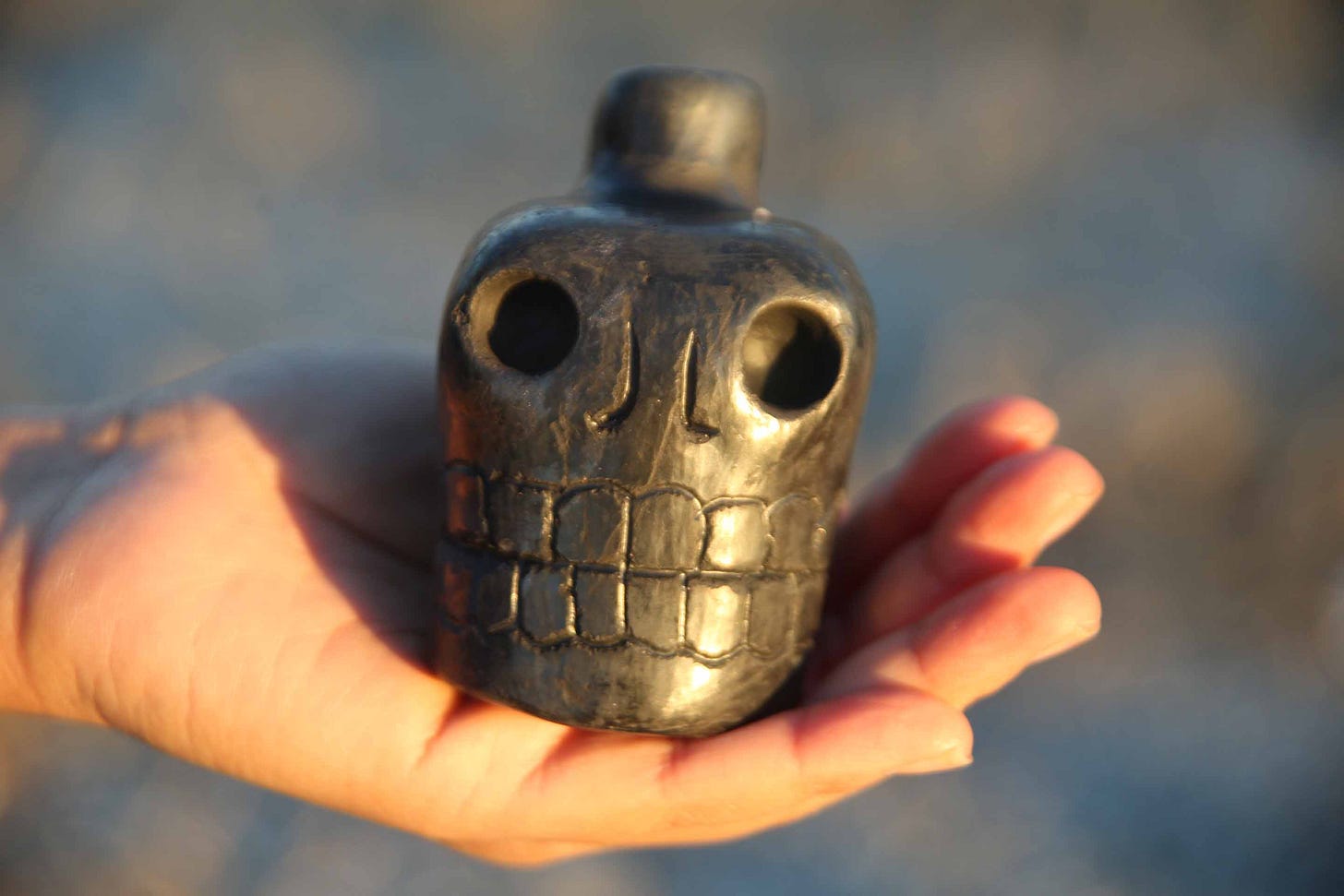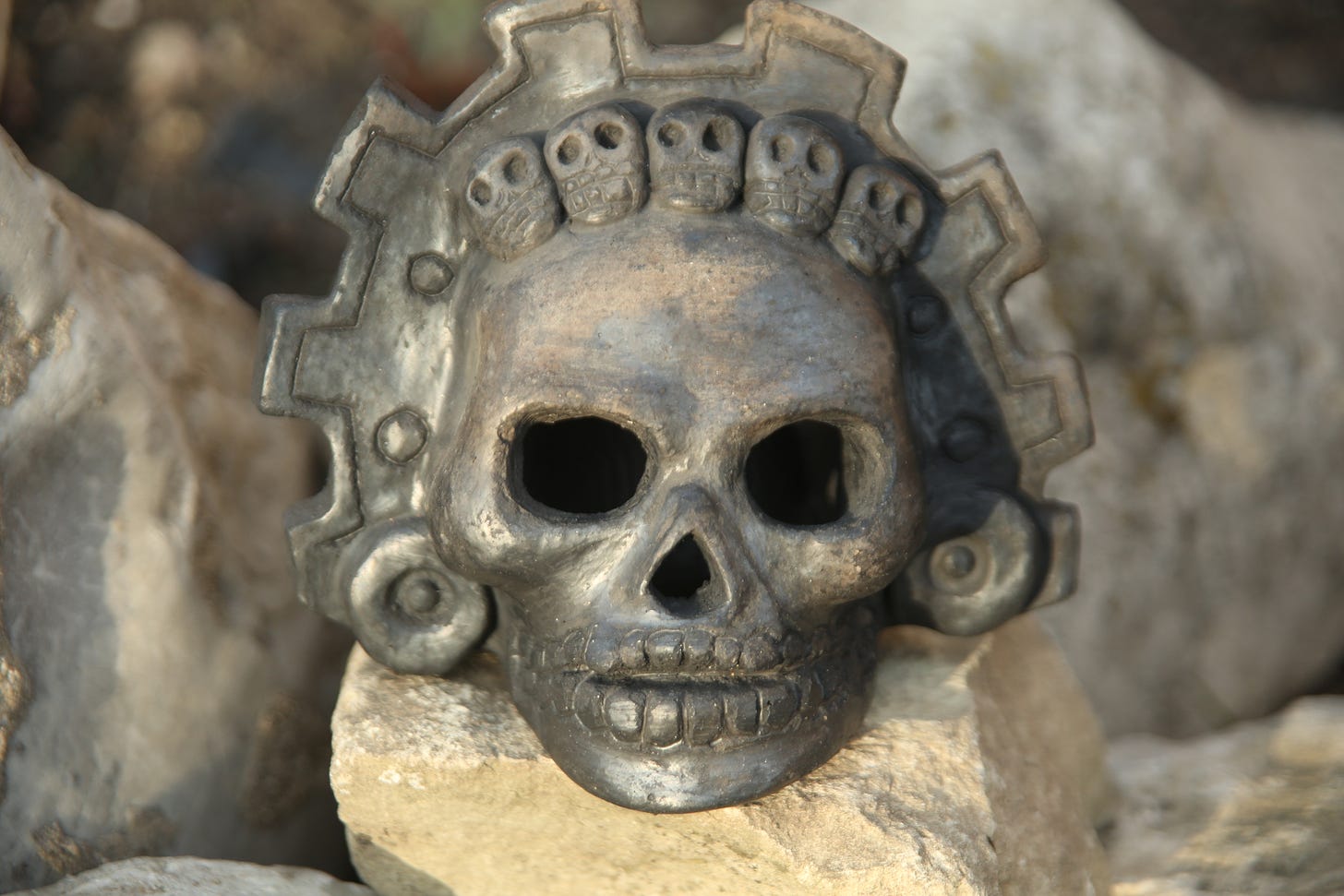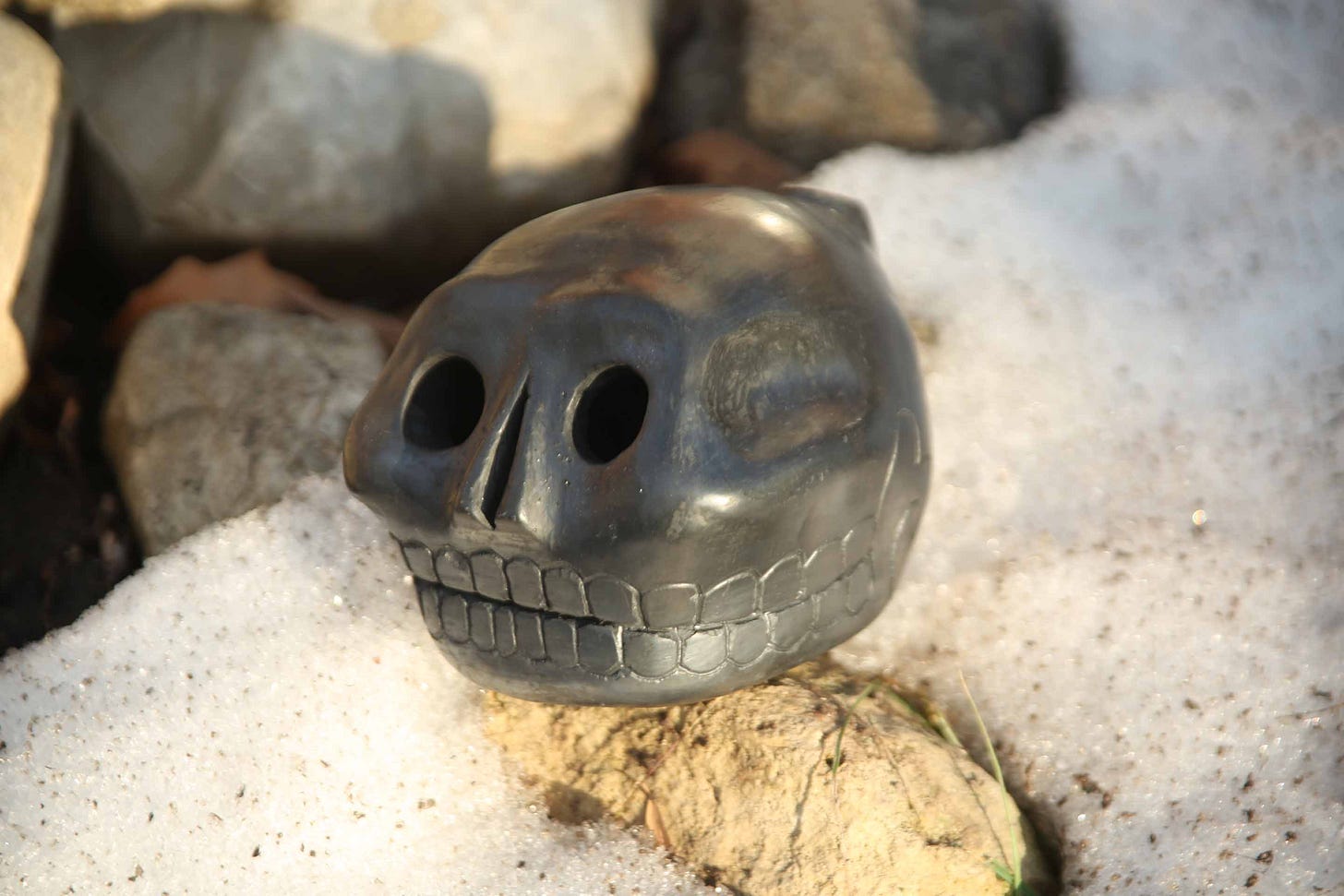The Terrifying Sound of the Aztec Death Whistle
The whistling sounds would scare the daylights out of you, but nobody knows their purpose yet.
Can Whistles Be Dangerous?
For most people, whistles are harmless playthings. Whistles are ubiquitous and can be found in every design and almost every culture. They are the remnants of our childhood and have been around for centuries as nonsensical nothings.
That was the very reason that in 1999 when archaeologists excavating the temple of Tlatelolco in Mexico City discovered the skeleton of a 20-year-old sacrificial victim clutching two skull-shaped whistles, they did not think much about it. They were assumed to be mere toys or ornaments and were cataloged and stored in warehouses.
It was only decades later, when a researcher decided to blow into one, he discovered the horror. He discovered that the creepy clay skull object made a spine-chilling noise described by him as “the scream of a thousand corpses.” Yes, it was that creepy.
That said, the Aztecs were prolific noisemakers. They had conch shells for ceremonies, ocarinas for making animal grunts to attract deer, and flutes for traditional music entertainment. Using clay, sugarcane, turkey feathers, ores, frog skins, and many other materials, they were able to create sounds to closely imitate various life events.
However, nothing even matches close to the ferocity and the horrifying sound of the Aztec death whistle. Listen to it at your own risk; once heard, this unnerving sound cannot be forgotten. Scientists and archaeologists are still trying to understand the purpose behind the creation of these spine-chilling death whistles.
The Aztec Death Whistles
The true purpose of these artifacts has baffled experts to date.
According to the engineer Roberto Velázquez Cabrera who first coined the term “death whistle,” these whistles were possibly used for sacrifices, blown just before the victim is killed so that his/her soul is guided in the afterlife. The Aztecs believed that Ehecatl, the Aztec god of wind, would take the victim through the underworld safely.
But not all agree with this theory, as some experts believe that Aztecs might have used these whistles in wars as part of psychological warfare tactics. Imagine the scene; thousands of warriors rushing towards the enemy from behind a hill, hundreds of drums beating wildly as they advance forward in unison, and suddenly a hundred death whistles blowing together, creating a frightening cacophony of tormented screams from thousands of corpses.
Even the most hardened of enemies would undoubtedly lose their resolve and start fleeing as skeletons, zombies, and all manner of nether-worldly beasts start screeching at the top of their lungs on the hapless spectators. As Jaime Arredondo, an art historian and professor of Mesoamerican and Latino studies at New York University, says.
“You can imagine the frightening sound if you had 200 or 300 or 5,000 warriors blowing these instruments. That would be extremely intimidating.”
Were These Whistles Used for Healing?
And perhaps the most peaceful of all theories rely on these whistles' healing and medicinal aspects. They might be used to induce trances that might be used for healing purposes rather than terrify. Some experts believe that such whistles help the brain to go into a dream-like state that can be used to cure certain illnesses.
Modern research has also confirmed that sounds impact heart rates and control the state of consciousness. Researchers are currently exploring whether the whistles sent patients into a hypnotic state or alleviated pain. As Arnd Adje Both, an expert in pre-Hispanic music archaeology, says.
“My experience is that at least some pre-Hispanic sounds are more destructive than positive,” Both told the AP. Others are highly trance-evocative. Surely, sounds were used in all kinds of cults, such as for sacrificial ones, but also in healing ceremonies.”
The Whistles Are Making a Comeback
Whatever the purpose, the whistles are making a comeback after years of being relegated to the annals of Mexican history.
The whistles have finally received their due importance and have been recognized as an important cultural milestone in Mesoamerican history. The ancient Aztec instruments, along with these whistles, are being used in modern popular soundscapes.
The musician and instrument maker Xavier Quijas Yxayotl has helped popularize the death whistle. Yxayot’s musical group has performed with numerous Aztec instruments at countless festivals, concerts, and special events. He also made the instruments used in Mel Gibson’s 2006 film Apocalypto. He also sells handcrafted death whistles on his website.
Yes, the whistles may have a bloodthirsty history behind them, but they undoubtedly allowed us to re-examine Mesoamerican civilizations in a new rhapsody of science, music, and artistry.
Sources
· The Aztec Death Whistle is History’s Reminder That the Aztecs were Terrifying
· The Disturbing Story of the Aztec Death Whistle
· The Aztec Death Whistle Makes One of the Scariest Sounds You'll Ever Hear
· The Story Behind the Disturbing Ancient Aztec Death Whistle in 5 Interesting Facts
· Listen to The Aztec Death Whistle Horrifying Sound
· Aztec Death Whistle, Absolutely Horrifying!
· The Aztec Death Whistle and Its Bloodcurdling Scream







